Blue Angels Homecoming 2023 Air Show is this weekend. How well do you know their moves?
The Blue Angels Homecoming 2023 air show is this weekend, giving upwards of 180,000 people the chance to see the U.S. Navy’s flight demonstration team perform one last time before the 2023 air show season comes to a close.
The two-day air show will be held onboard the Naval Air Station Pensacola Friday and Saturday. Gates will open around 8 a.m. and the show will start at 9:30 a.m.
The Blue Angels Homecoming Air Show is the team’s wrap-up celebration of their performance season coming to an end, and it gives pilots another chance to connect with the community during their relatively short tour with the team.
Blue Angels Homecoming 2023: Blue Angels Homecoming Air Show Pensacola 2023 VIP tickets now on sale. Everything to know
There’s a lot packed into the homecoming, but an often overlooked aspect involves the performance itself — the maneuvers.
The Blue Angels perform dozens of spectacular and even nauseating aeronautical stunts throughout their 45-minute shows. Superfans know each maneuver by name, but more casual fans are often left out.
Here’s a look at some of the Blue Angels’ most popular maneuvers.
Terms you should know
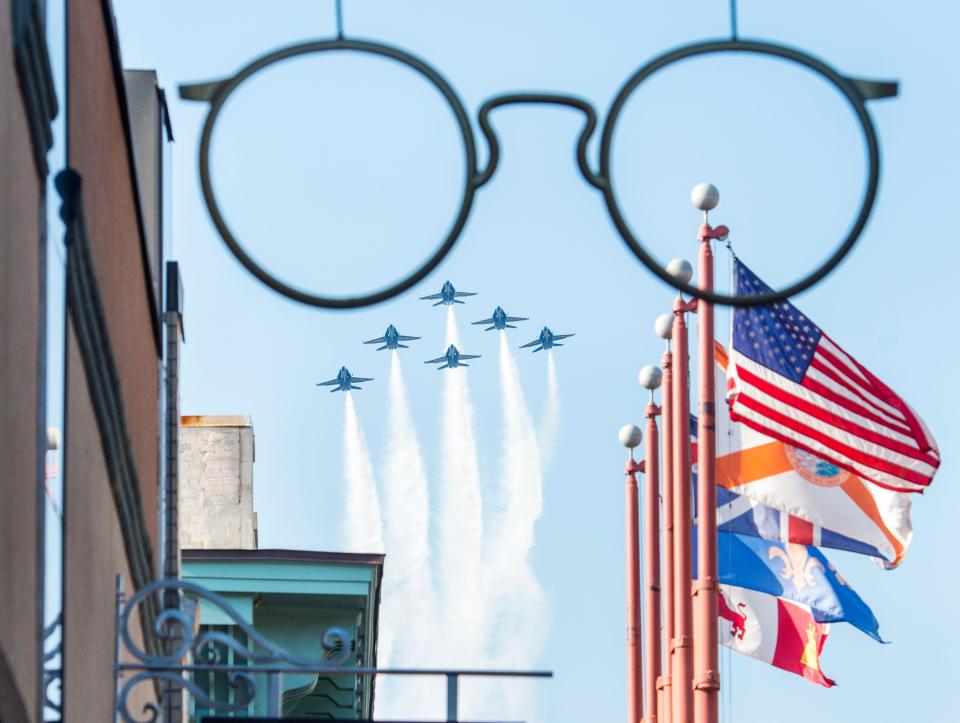
Here are a few terms to know before reading.
Center point: This traditionally indicates the center point of the runway. When not near a runway, this is a reference point the pilots use for primary alignment.
Angle of bank: This is a term showgoers don’t need to know to enjoy the show but it is referenced in the Blue Angel maneuver manual and indicates the angle between an aircraft’s vertical axis and the earth’s vertical plain that contains the aircraft’s longitudinal axis.
In other words, if you draw a horizontal line across the earth’s horizon and a vertical line coming out of the top of an aircraft, the angle measured between the earth’s horizon and the aircraft is considered the angle of bank or bank angle.
Flight line: The flight line is typically the part of an airport near its hangars where aircraft can be parked and serviced.
Delta Formation
The Delta formation is a flight pattern recognizable by just about anyone. The formation consists of several jets flying together in a “V” formation with each jet cascading higher than the one in front of it, using the forward jet to reduce wind resistance. It’s a formation also recognizable because it’s used by birds to migrate over long distances.
While the Delta formation isn’t a maneuver in the same vein as the others listed below, it’s easily one of the most recognizable and iconic visuals associated with the Blue Angels.
Delta Break Out
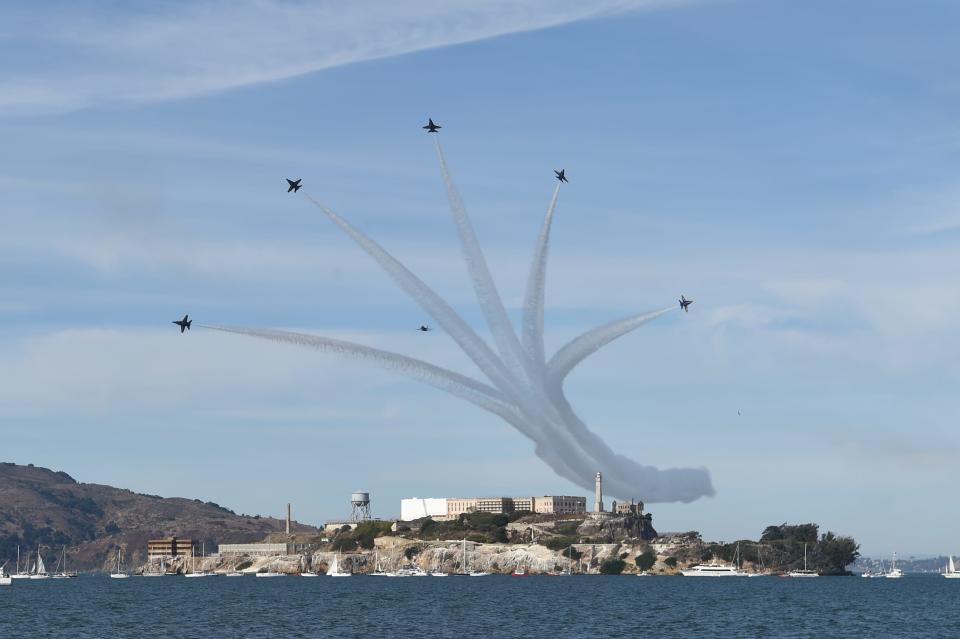
The Delta Breakout is a popular maneuver where the Blue Angels fly toward the crowd over the center point in delta formation before breaking apart in different directions above the crowd. The lead will pull up into a steady, 2G climb forward, the solos (No. 5 and No. 6) will pull outboard in a steady, 2G, 60-degree angle-of-bank that is offset by 90 degrees, the wingmen (No. 2 and No. 3) pull outboard in a steady 2G, 45-degree angle-of-bank offset by 45 degrees while the lead and slot continue straight and exit behind the crowd.
Diamond Echelon Parade
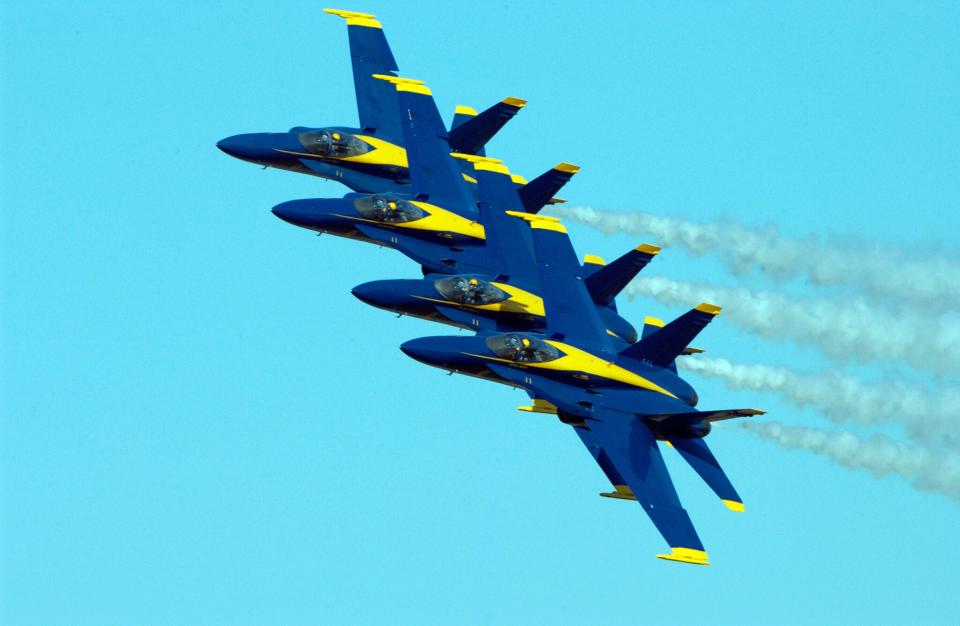
In right echelon, a diamond formation will execute a right-to-left, non-aerobatic circular pass at approximately 60-degree angle-of-bank that crosses over the center point at a minimum altitude of 200 feet.
Sneak Pass
The Sneak Pass is a crowd favorite. While the audience is still focusing on the diamond's left echelon roll, the two solo pilots perform a sneak pass at just under the speed of sound, one from the left of the crowd and one from behind. These stealthy flyovers are low altitude and a good reason to bring ear protection.
Fleur De Lis
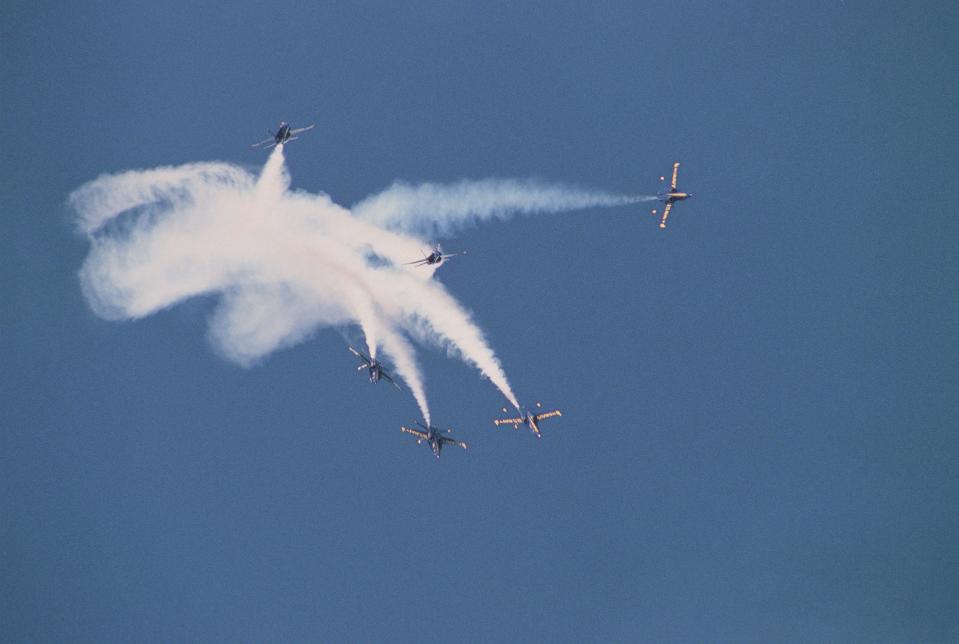
The Fleur de lis maneuver has the Blue Angels approaching the show line in a Double “V” formation with the six aircraft commencing a climb. All six aircraft will split simultaneously at approximately 2,000 feet before the center point. The two solos will execute 1.5 rolls and exit to the right of the crowd initially, then turn behind the crowd. The four aircraft in diamond formation then rendezvous during their looping maneuver over the center point and egress in diamond formation in front of the crowd.
Double Farvel
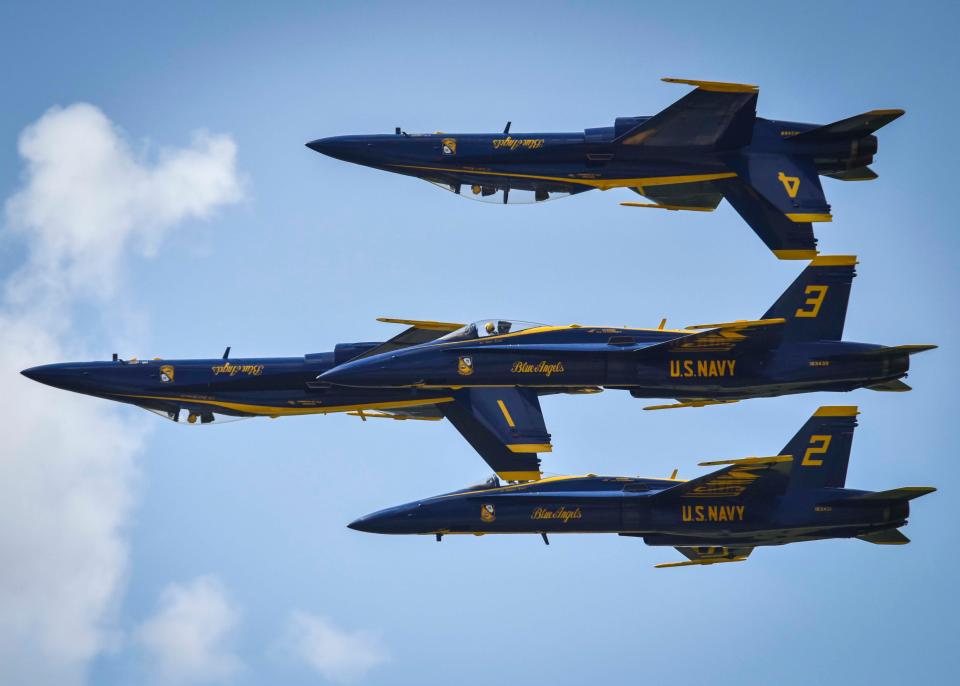
The lead and slot (No. 1 and No. 4) roll inverted simultaneously at the edge of the aerobatic box while No. 2 and No. 3 remain upright. The four jets then maintain a diamond formation as they perform a flat pass around 200 feet above the crowd. Right after the formation passes the center point, the lead and slot pilots roll upright in a climb.
Opposing Knife Edge
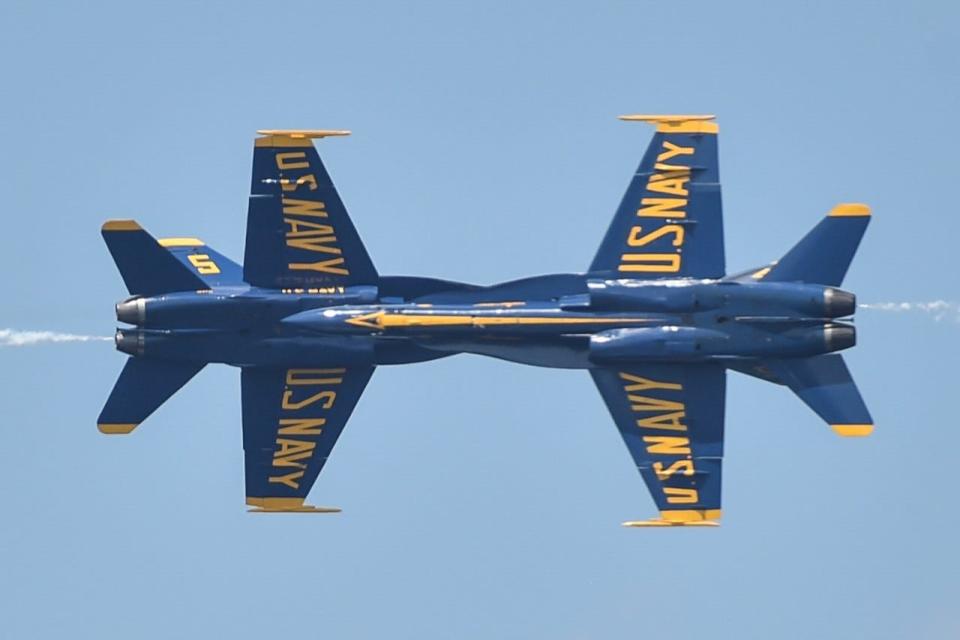
The Opposing Knife Edge pass has the solos approach the center point from opposite directions. Each pilot will roll their aircraft into a 90-degree angle-of-bank before passing each other on the center point. After the pass, both aircraft will roll upright and clear the front of the crowd.
Loop break cross
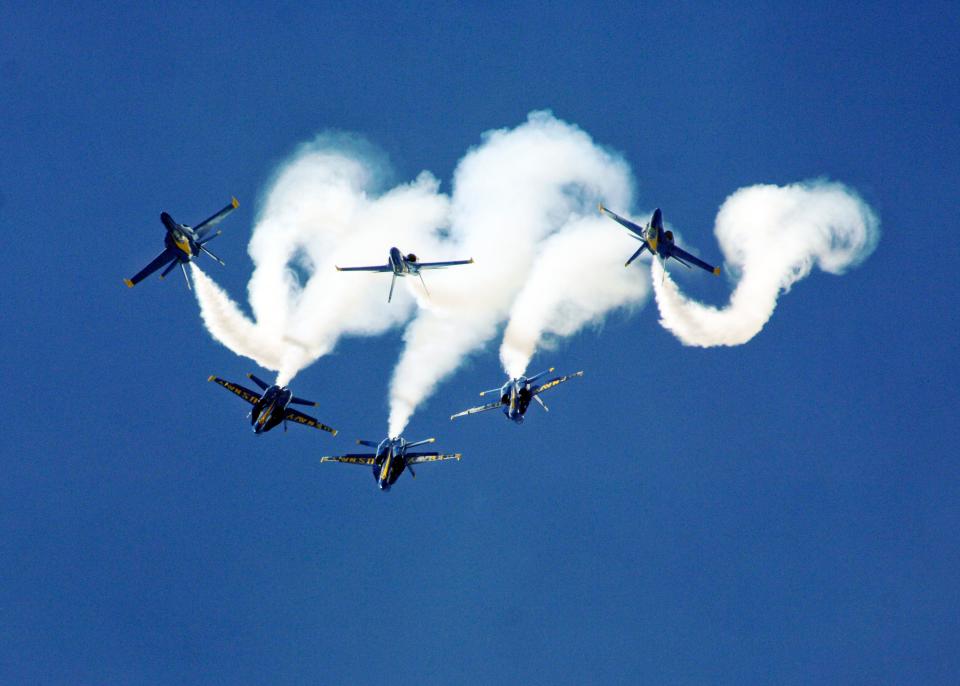
The jets cross over the center point in the Delta formation, all six jets in a triangle, where they execute a loop together. Before the loop is completed the three pilots who make up the back of the formation separate and head in the opposite direction. All six pilots then turn around and head back toward the center point where they will all cross at a speed of nearly 1,000 mph.
Vertical break
The pilots in diamond formation trail one another and climb at a vertical 90-degree angle, where they reform the Diamond. The Diamond then splits and each jet goes in a different direction.
The Fortus
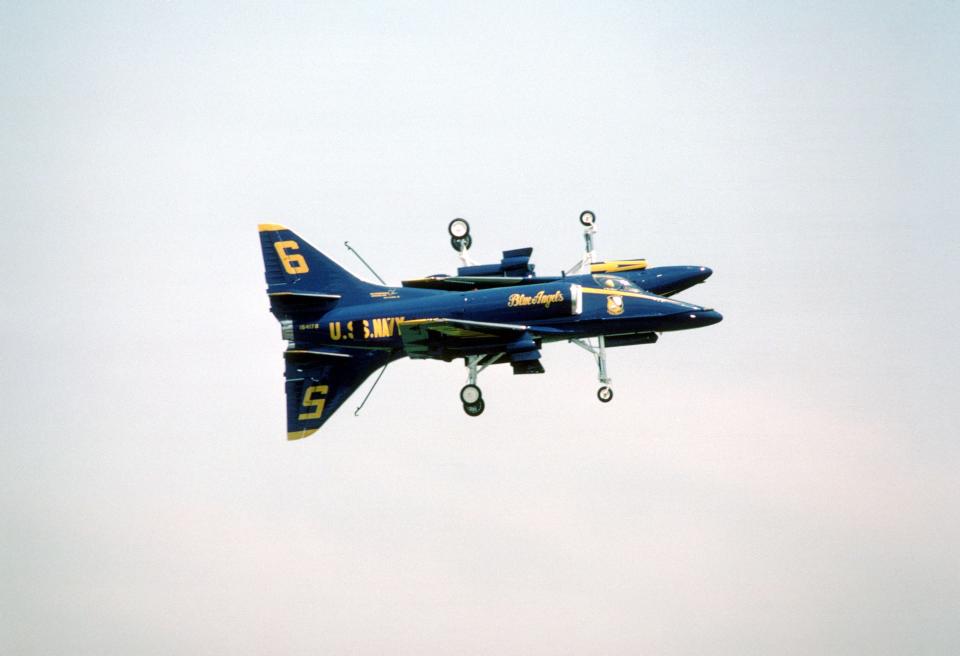
The solo jets fly side by side with their landing gear and tailhooks down. The No. 5 jet rolls to the inverted position, creating a mirror image for the crowd.
This article originally appeared on Pensacola News Journal: Blue Angels Homecoming 2023: How well do you know their maneuvers?
